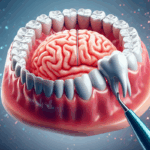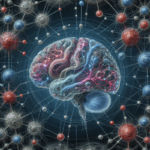
Personality Traits in Aspiring Social Media Influencers
A recent investigative endeavor into the characters of emerging influencers has unveiled distinctive personalities that appear to motivate an individual’s pursuit of an influencer lifestyle.
The collaborative investigation by scholars at the University of Wrocław and Oxford brought to light that individuals who are outgoing, self-centered, and inclined towards flamboyance are more likely to aspire to a profession as influencers.
The Magnetism of Social Persuasion
The surge in social media’s popularity has significantly molded the vocational dreams of today’s youth. Evidence of this shift was prominent in a 2019 survey sponsored by Lego, where it was disclosed that out of 3,000 children across the USA, UK, and China, a third showed a preference for influencer careers, overshadowing the 11 percent who wished for space exploration careers as astronauts. The researchers’ purpose was to discern whether distinct personal attributes were commonplace among aspiring influencers.
The study enlisted the participation of close to 800 individuals aged 16 to 17 for this investigation. The adolescents’ professional ambitions were gauged through a sequence of inquiries, after which a comparison of their personalities against the “Big Five” traits—openness to experience, conscientiousness, extroversion, agreeableness, and neuroticism—was conducted. Moreover, the research probed into levels of histrionic tendencies, which are indicative of conspicuous and melodramatic behaviors.
Findings disclosed that young individuals scoring high in categories such as extroversion, narcissism, and histrionic behaviors exhibit a stronger propensity towards aspiring to influencer status. The connection between these traits and a yearning for recognition and validation, traits often seen in the world of performing arts, hints that today’s performers could evolve into tomorrow’s social media sensations.
Previous studies have largely concentrated on the audience’s perception of influencers, making this investigative work among the pioneers to scrutinize the driving personality characteristics behind this contemporary vocational choice.
Despite the allure, succeeding as an influencer is fraught with challenges, and only a few out of the many hopefuls manage to achieve prominence in this competitive field.
Further examples, such as the story of Hawk Tuah Girl’s controversial crypto venture, underscore the precarious and complex reality of an influencer’s career trajectory.
This research, documented in the journal Telematics and Informatics, ignites a discourse on the repercussions that this paradigm shift may have on societal cultural norms and established occupational frameworks.








